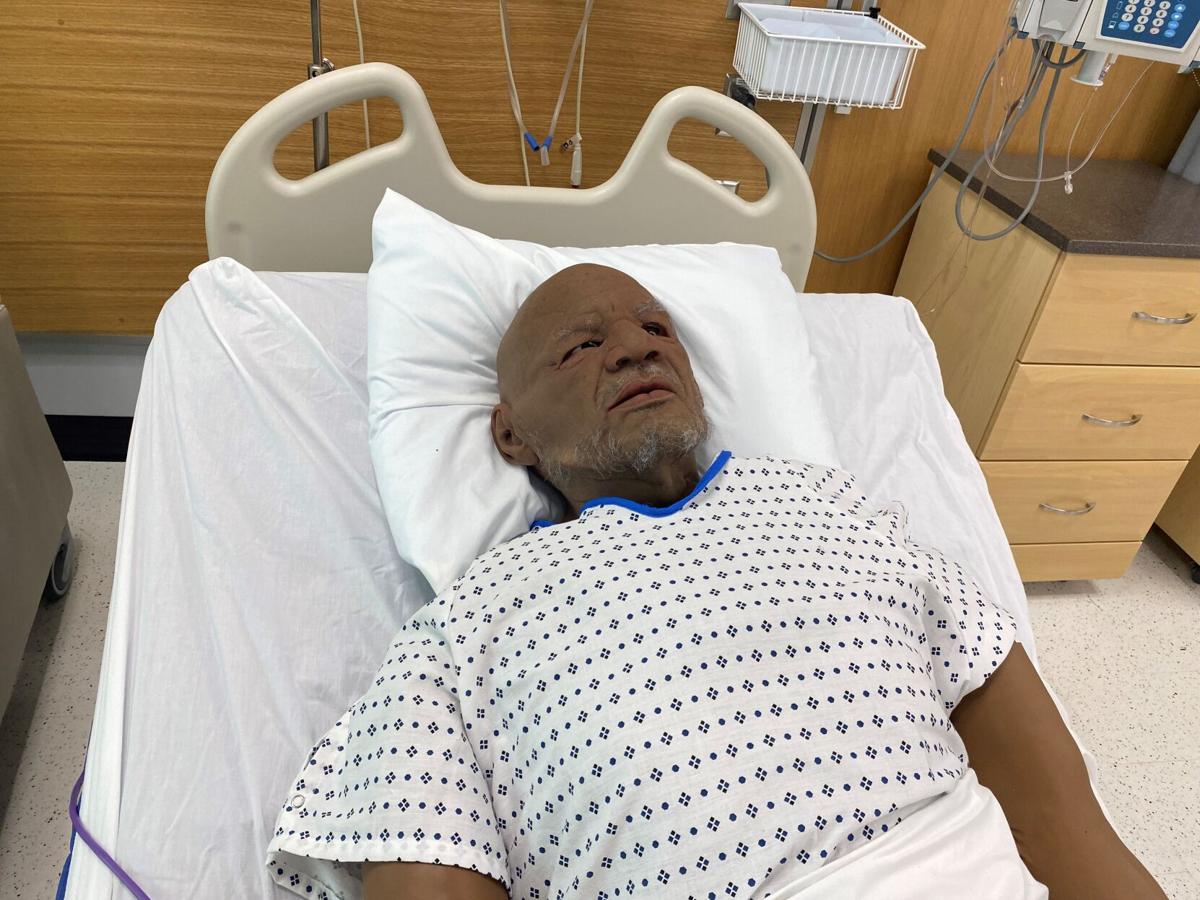Student nurses need to complete at least 400 hours of clinical training before they can take the National Council Licensure Exam, but more states are allowing students to practice their skills in simulated labs instead of on real patients. A new bill in New York State would allow nursing students to substitute up to 30% of their clinical training with “high-quality simulation education.”
Advocates for the change say it would help bring more nurses into the workforce amid the ongoing staff shortage, but opponents say students could miss out on important experiences that only occur in person.
If you head over to SUNY Erie Community College in NY, you will find groups of second-year nursing students working in the simulation lab as part of their training. They are learning how to check the vitals on a female manikin named “Gertie.” The students take turns checking for a pulse on Gertie’s plastic wrist, listening to her heartbeat through the stethoscope, and taking her blood pressure with a BP cuff.
Halfway through the simulated checkup, the instructor Tammy Goodemote presses a button on the remote to have Gertie let out a loud scream to show the students how a patient would react in crisis.
Nursing schools all over the country are under pressure to produce as many graduates as possible, and the inclusion of simulated training could help speed up the education process.
So far, 31 states have laws that allow nursing schools to use simulated training as part of the clinical hours required to take the NCLEX. And New York is looking to become the 32nd.
State Senators recently passed a bill that would allow for simulated training. Many states allow nursing students to replace up to 50% of their required clinical training with simulated labs. Nurse educators, unions, and even some healthcare facilities are now advocating for New York to pass the 30% rule.
“The demand for nurses has never been higher, while the challenges of becoming a nurse have never been greater,” reads a letter of support to state legislators that was signed by the Healthcare Association of New York State, the Greater New York Healthcare Association, the Healthcare Association of Western and Central New York, the Suburban Hospital Alliance, and the Iroquois Healthcare Association. “While there is no single solution, the Senate and Assembly’s enactment of (this bill) will help to address New York’s nursing shortage crisis.”
But Jordan Plyler, a registered nurse and director of Inpatient Behavioral Health at Niagara Falls Memorial Medical Center, said the change could lead to nurses missing out on key experiences.
“There is no substitute for in-person experience,” he said. Plyler is currently trying to open a 24-bed hospital unit but he doesn’t have enough nursing staff to get it off the ground.
Others are afraid of schools using different types of simulations. The authors of the bill are still trying to come up with a clear definition of “high-quality simulation” considering the quality of these programs can be spotty.
“A lot of folks say they would be in favor if we can define the requirements for quality simulation education,” said Donna Lupardo, D-Endwell, one of the bill’s sponsors. “I am optimistic we will get there this session.”
New York requires nursing students to complete 500 hours of clinical training. Under the proposed 30% rule, up to 166 hours of simulated training would count towards the total.
But is simulated training as good as caring for patients in person?
A 2014 study by the National Council of State Board of Nursing showed little difference between students whose clinical training consisted of up to 50% simulation and those who trained 100% in person.
Many nursing schools use simulations as part of the training, but little to none of it counts towards class credit.
ECC Dean of Nursing Patti Losito said simulations are becoming an increasingly important part of a nurse’s education.
“Things have changed from the days when a woman would have a baby and be in the hospital for five days,” Losito said. “Now patients in the hospital are much sicker, and we have more advanced technologies and therapies, so it’s important for nurses to be able to assess the patient, assess the monitors and respond quickly and safely using the information they’ve been taught.”
Simulations give instructors more control over the patient-student relationship. They can have the manikin react negatively during the consultation, which can help students learn how to deal with unpredictable situations.
“Using high-tech simulation, we can make those experiences possible ahead of time, so all of our students will have experienced a crisis situation that they know how to respond to if it occurs when they are caring for a patient,” she said.
They can also have the faux patient experience a health emergency during the session. “We can decrease the patient’s oxygen saturation, make them start coughing or change the rhythm on the heart monitor to simulate a patient coding (having a cardiac arrest),” Losito added. “And, we have cameras that record the team’s response so the teachers review it with the students afterward and debrief them on what they did right or wrong.”


